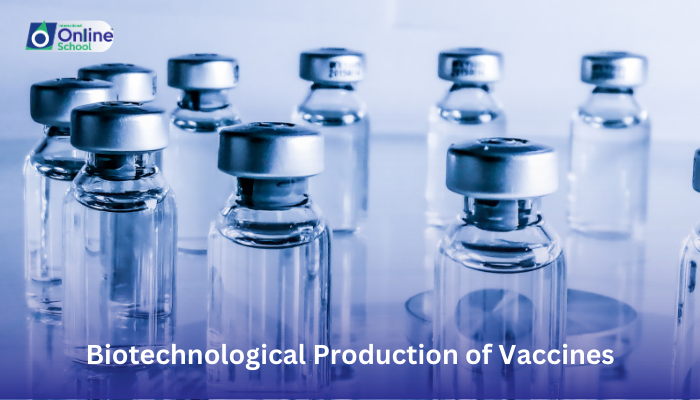
Learning Outcomes:
i. Describe the role of biotechnology in the development and production of vaccines, highlighting different technological advancements.
ii. Understand the various types of vaccines produced using biotechnology and their effectiveness in preventing infectious diseases.
iii. Appreciate the global impact of vaccine technology in controlling and potentially eradicating diseases.
Introduction:
Imagine an invisible shield, protecting us from the ravages of infectious diseases. This isn't magic; it's the power of vaccines, biological marvels crafted by the ingenuity of biotechnology. Today, we embark on a journey into the fascinating world of vaccine development, exploring how scientists harness the power of living organisms to create these life-saving tools.
i. The Tools of the Trade: Biotech's Arsenal for Vaccine Production:
Recombinant DNA technology: Scientists isolate and manipulate genes, allowing them to produce specific viral or bacterial proteins in bacteria or yeast cells. These proteins form the basis of many vaccines.
Gene editing techniques: CRISPR-Cas9 and other tools allow for precise modification of viral genomes, creating weakened or inactive viruses for use in live-attenuated vaccines.
Viral vector technology: Engineered viruses transport vaccine components, like genes or proteins, into human cells, triggering an immune response.
ii. A Diverse Arsenal: Types of Vaccines and their Targets:
Live-attenuated vaccines: Weakened versions of viruses are introduced into the body, stimulating the immune system to develop defenses against the original virus. Examples include measles, mumps, and rubella (MMR) vaccine.
Inactivated vaccines: Killed viruses or bacteria are used to trigger an immune response without causing the disease. Examples include polio and hepatitis A vaccines.
Subunit vaccines: Specific viral or bacterial proteins, rather than the whole organism, are used to stimulate immunity. Examples include the hepatitis B and HPV vaccines.
DNA and mRNA vaccines: These vaccines introduce genetic instructions for viral proteins into cells, prompting them to produce the proteins and trigger an immune response. Examples include COVID-19 vaccines.
iii. A Global Shield: The Impact of Vaccine Technology:
Eradication of diseases: Smallpox has been eradicated, and polio is on the verge of being eliminated, thanks to widespread vaccination campaigns.
Reduced disease burden: Vaccines have significantly decreased the incidence of many infectious diseases, improving global health and saving countless lives.
Improved quality of life: Vaccines contribute to increased life expectancy, reduced infant mortality, and overall improved health outcomes for people of all ages.
iv. The Future of Vaccines: Continuous Innovation and Challenges:
Development of new vaccines for emerging diseases: Scientists are constantly working on vaccines for new and evolving threats like HIV and Ebola.
Personalized vaccines: Tailoring vaccines to individual genetic profiles may enhance effectiveness and address specific needs.
Overcoming vaccine hesitancy: Addressing misinformation and promoting trust in vaccine science is crucial for maintaining global immunization coverage.
Vaccines, crafted by the ingenuity of biotechnology, are powerful tools in the fight against infectious diseases. They have saved countless lives, improved global health, and continue to offer hope for a future free from the burden of preventable illness. By understanding the science behind these life-saving inventions, appreciating their impact, and embracing continuous innovation, we can ensure that biotechnology continues to be a force for good, protecting generations to come from the invisible enemies that threaten human health and well-being.